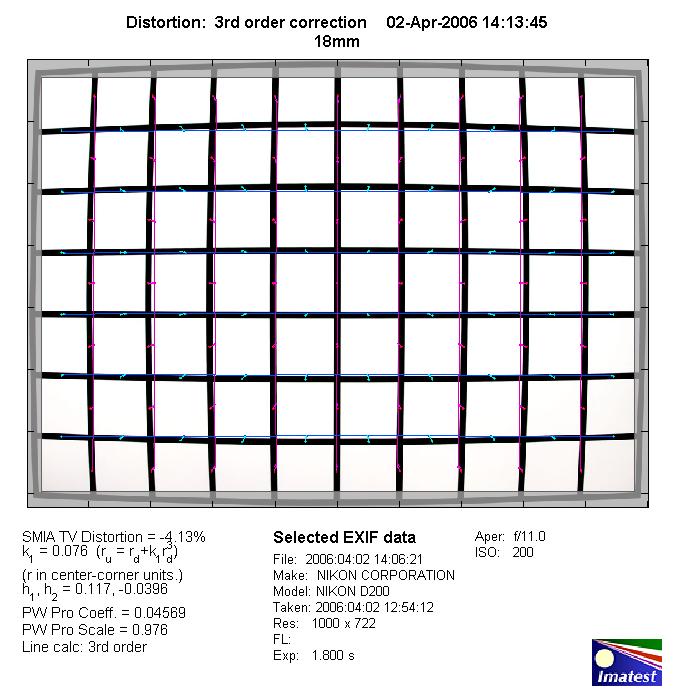|
Nikkor AF-S 18-200mm f/3.5-5.6 G IF-ED VR DX - Review / Test Report - Analysis |
|
Lens Reviews -
Nikon / Nikkor (APS-C)
|
|
Page 2 of 3
Distortion
Extreme zooms tend to suffer from rather hefty distortion and the AF-S 18-200mm
is no exception in this respect. In fact the amount of barrel distortion (4.1%)
at 18mm broke a new negative record beating the Canon EF-S 17-85mm IS by a fraction.
At 24mm the distortion characteristic is neutral before turning into very pronounced
pincushion distortion beyond. All in all one of the worst performances here.
|
Move the mouse cursor over the focal length text marks below to observe the respective distortion
|
| 18mm |
24mm |
50mm |
100mm |
200mm |
|

|
The chart above has a real-world size of about 120x80cm.
Vignetting
The AF-S 18-200mm DX is a reduced image frame (APS-C) lens so vignetting is far
more pronounced compared to full frame lenses. Typical for standard zooms the
vignetting is worst at 18mm @ f/3.5 where it exceeds 1EV in the image corners.
Stopping down to f/5.6 is a good idea here. The situation eases significantly
in the middle range before increasing again towards 200mm. The amount of vignetting
is relatively modest here even at wide-open aperture.

MTF (resolution)
Typical of extreme zooms the resolution varies significantly across the zoom range.
At 18mm the center performance is excellent whereas the borders follow
quite a bit behind. At f/5.6-f/11 the border performance is very decent including
good extreme corners. The sweet spot of the lens is around 24-50mm with an
excellent center and much improved borders. At 100mm the lens showed a
rather pronounced performance drop at wide-open aperture - the center performance
is still very fine here but the borders were very soft. However, stopping down to f/8
helps to resolve the issue. At 200mm the resolution figures are pretty decent again.
The lens showed quite pronounced field curvature and high residual spherical aberrations
(focus shift when stopping down) at the wide end of the zoom range.
Please note that the MTF results are not directly comparable across the different systems!
Below is a simplified summary of the formal findings. The chart shows line widths per picture height (LW/PH) which can be taken as a measure for sharpness.
If you want to know more about the MTF50 figures you may check out the corresponding Imatest Explanations
Chromatic Aberrations (CAs)
Chromatic aberrations (color shadows at harsh contrast transitions) are relatively
well controlled for such a zoom lens. Nonetheless they can be visible in many
scenes with an average CA pixel width of around 1px regardless of the focal
length except at 100mm.

|